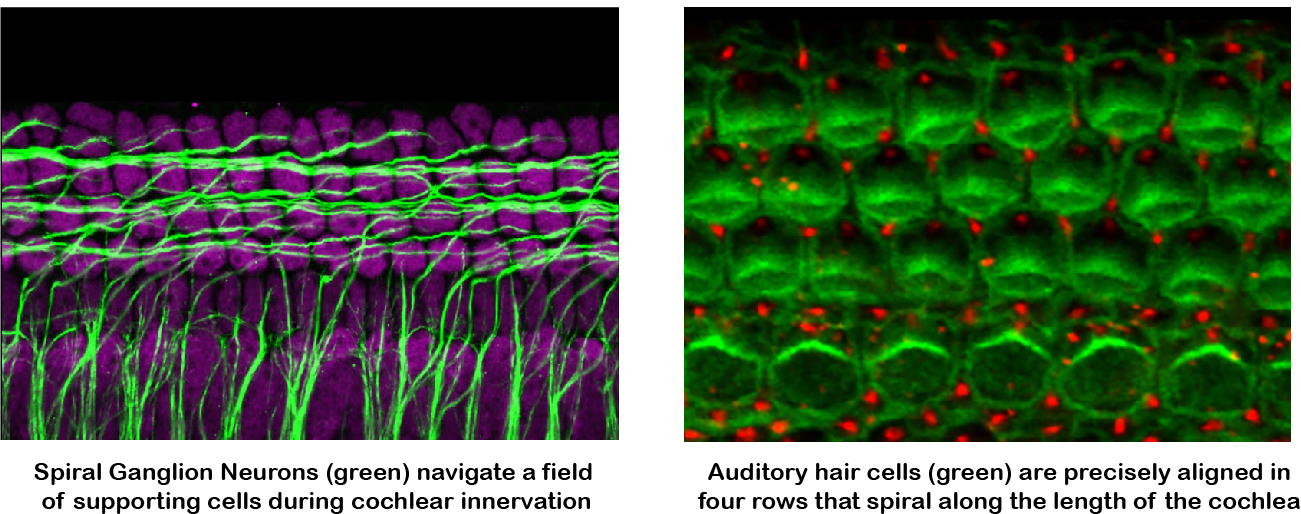Michael Deans

Associate Professor of Surgery, Division of Otolaryngology
Director of Research of Surgery, Division of Otolaryngology
Adjunct Associate Professor of Neurobiology
The Deans Lab
Developmental Neuroscience
Molecular Neuroscience
Cellular Neuroscience
E-mail:
Education:
B.S. 1996, Michigan State University; Ph.D. 2002, Harvard University; Postdoctoral Fellow, 2002-2008, Harvard University
RESEARCH:
Mechanisms of sensory system development and cellular morphogenesis
The goal of my laboratory is to understand cellular and molecular mechanisms that guide the development and function of the auditory and vestibular sensory organs of the inner ear. Although my primary appointment is in a clinical department, my laboratory is embedded in the Department of Neurobiology & Anatomy and located in BPRB. As a result, my lab members are deeply integrated within the Neuroscience and BPRB research communities.
Our research is focused on the development of the inner ear because a number of fundamental issues in developmental biology may be directly assayed using this system. Foremost are questions of Planar Cell Polarity. For example, how does a cell distinguish its left side from its right and turn to face the correct direction? Making this distinction is of paramount importance for inner ear sensory receptors because these cells detect sound and motion through the mechanical deflection of a polarized bundle of stereocilia. Mice with misoriented stereociliary bundles have measurable hearing loss and compromised vestibular function.
Other outstanding questions relate to axon guidance and circuit assembly. For example, how do inner ear neurons distinguish between the auditory and vestibular systems, and how do the circuits they form maintain the tonotopic or spatial maps encoded by the auditory or vestibular sensory receptors? Remarkably we have found that both sensory receptor innervation and cellular polarity are guided by Planar Cell Polarity signals, however the mechanisms of signal integration function differently for these two developmental events. Finally, because we are working in a peripheral sensory system and develop genetic models in the mouse, we are uniquely positioned to assay the behavioral consequences of our genetic manipulations through auditory and vestibular tests. Ongoing research is supported by two independent NIH grants that are designed to decipher Planar Cell Polarity signaling mechanisms in these two developmental contexts.

